Prix Caritas Photo Sociale 2023
- Exposition
- Location Galerie le Château d'Eau
-
Public
- Tout Public
For the fourth edition of Prix Caritas Photo Sociale Prix Caritas Photo SocialeLa Galerie Le Château d'Eau will be welcoming the 2023 winner Anaïs Oudart for her series entitled “Héroïnes 17”, which documents the difficulties faced by young women from the Children's Social Welfare system while trying to make their way through life, without parents or family.
In the same space, the work of the two runners-up will be on show: Sarah Leduc for her series entitled “Ailleurs ici”, which focuses on people waiting for asylum in a village in Occitania. Mat Jacob for “Thierry et la violence du monde”, an investigation following in the footsteps of a homeless man as he discovers life on the streets and precarity.
In its desire to showcase a wide range of photographic themes, Galerie Le Château d'Eau supports and promotes social documentary photography.
Galerie Le Château d’Eau is delighted to be partnering once again with Réseau Caritas France, which was launched two years ago. This annual event features an exhibition by the Prize-winner and two runners-up.
Prize-winner Anaïs Oudart “Héroïnes 17”
The “philosophy” adopted by Prix Caritas Photo Sociale does not promote any particular photographic genre, processing or method. The prize can be awarded for documentary and reportage work, as well as for more contemporary, artistic and conceptual writing.
The choices made by the 2023 jury illustrate the diversity of aesthetic proposals for tackling poverty, precarity and exclusion situations in France, with three different viewpoints that ultimately complement each other and highlight the status of current photography and its possibilities. Anaïs Oudart, this year’s winner, analysed and investigated a new situation. Observing that the health crisis exacerbated family crises, that
many young people, including minors, were forced out of their homes, and that 40% of homeless people under the age of 25 come from the Children’s Social Welfare system, she looked into the critical situation faced by young women as a result of these circumstances. “I decided to talk about the difficulties they face as adults while trying to make their way through life, without parents or family. Many of them lived or are still living in precarious housing, some were homeless, others turned to prostitution as a way out. Despite the lack of support and accommodation, they keep going.”
Alternating between formal portraits and symbolic images, Anaïs Oudart’s photographs, showcasing a masterful use of colour, transform these young women into strong characters, “heroines” as she calls them. Through photography, she restores their dignity.
Christian Caujolle, Artistic Advisor
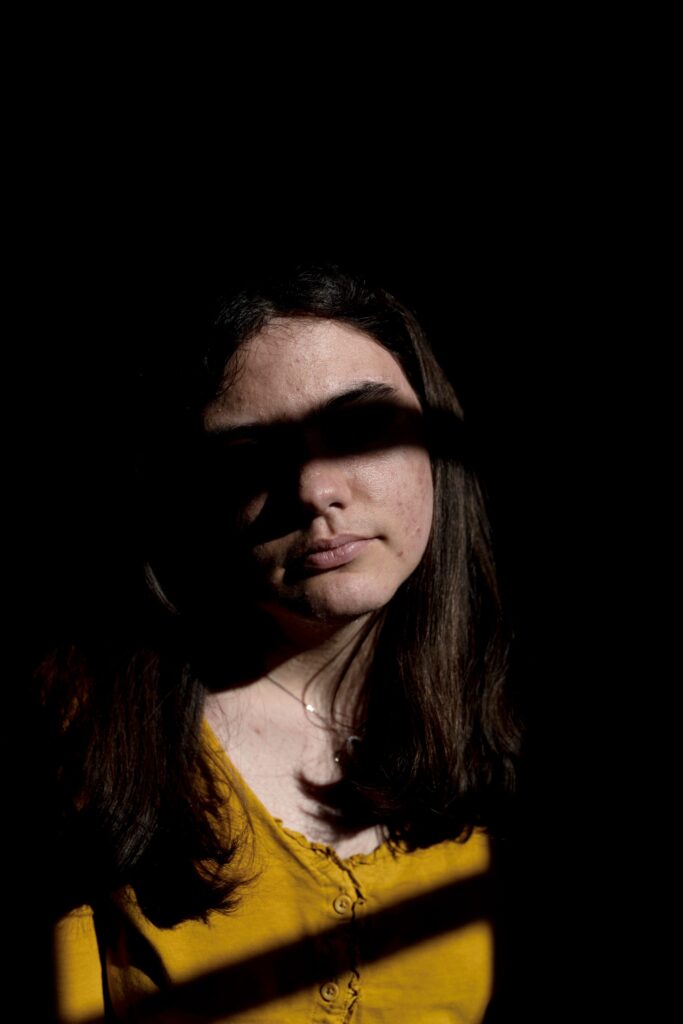


The two runners-up
The runners-up take us on other aesthetic and visual journeys, demonstrating both the expanded possibilities of photography and its ability to address and shed light on social issues.
Sarah Leduc « Ailleurs ici »
While waiting for their fate to be sealed by the French Immigration Authorities, around fifty people are being housed in the Centre d’accueil pour demandeurs d’asile (Cada – Reception Centre for Asylum-Seekers) of Lagrasse, in Occitania. They come from Somalia, Mali, Côte d’Ivoire, Algeria, Turkey, Iran or Albania. This small village in Corbières has a strong reception tradition. In 1983, the people residing in Lagrasse opened their arms to the “boat people”, Cambodian, Laotian and Vietnamese refugees fleeing the Khmer Rouge dictatorship. Since then, migrants regularly come and go, whilst waiting for the procedure to be completed.
Using basic and simple colours, Sarah Leduc, in line with traditional photojournalism, documents the daily lives of these people as they wait.
Christian Caujolle, Artistic Advisor
Mat Jacob «Thierry et la violence du monde»
“Thierry is homeless. For 25 years, he has roamed around France, carrying his home on his back, after leaving everything behind and cutting all ties with his family, his job and the institutions. Mat Jacob explains his approach: “I came across him in the middle of a pandemic, a sad time when people from all walks of life were drifting apart and protecting themselves from others. Relationships hardened, and even more so for marginal people. Isolation echoed even louder. Living conditions became more fragile. I took Thierry in for a while, and a bond was forged. We agreed that I would hit the roads with him, bearing witness to what it was like to live on the streets, in that world, during those times. He gave me his consent, then shortly afterwards he disappeared. He chose another path. I went looking for him in the department of Doubs and the town of Besançon, the last place he was seen. A quest into the world of the homeless, those who call city streets their home.”
With a background in photojournalism, Mat Jacob developed a classic black-and-white style, which is part of a long-standing tradition within social photography. However, he made it more complex by organising his photographs in sequences and montages, whilst adding text to the prints themselves.
Christian Caujolle, Artistic Advisor
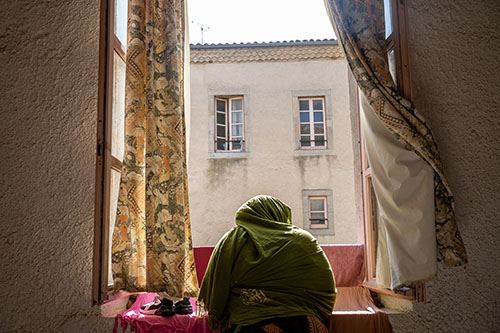
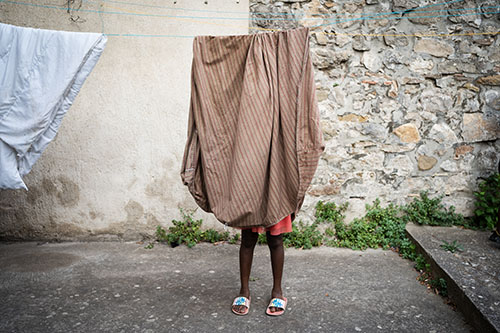
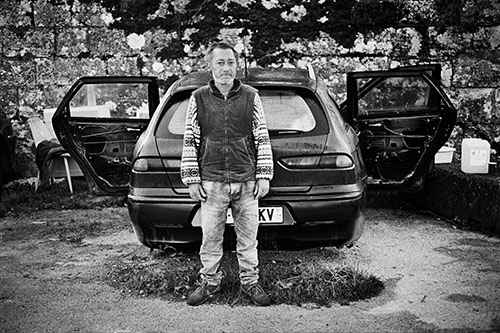
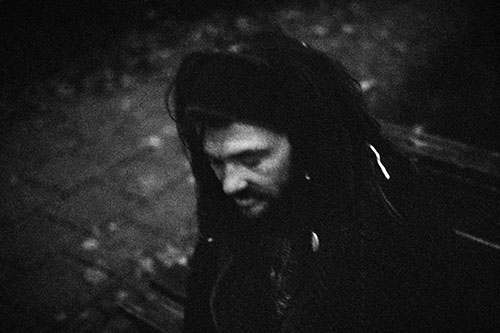
The “Héroïnes 17” and “Thierry et la violence du monde” series were produced as part of amajor photographic commission by the French Ministry of Culture, led by the Bibliothèque nationale de France (National Library of France).
Book > monograph published by Filigranes éditions
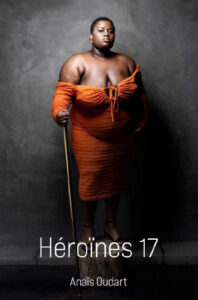
In November 2023, Filigranes will publish a monographic book dedicated to the winning series.
In stores and bookshops from November 2023
Introductory text by Emmanuelle Hascoët
Co-production Filigranes / Prix Caritas Photo Sociale
Format 210×300
Broché
Anaïs Oudart > héroïnes 17
The health crisis exacerbated difficulties within families. In the most vulnerable households, teenagers were perceived as a burden, leading to a significant increase in the number of family breakdown cases. She decided to talk about the difficulties they face as adults while trying to make their way through life, without parents or family. Many of them lived or are still living in precarious housing, some were homeless, others turned to prostitution as a way out… She portrayed and interviewed each of them as part of a collaborative process. She conformed to their location choices and the manner in which they wished to be portrayed, while revealing their strength and resilience.
Sarah Leduc > Ailleurs Ici
They come from Somalia, Mali, Côte d’Ivoire, Algeria, Turkey, Iran or Albania. They have fled war, religious dictatorship, organised crime or patriarchal customs that subject women and girls to the worst forms of abuse. They left everything behind to find refuge in France, where they are seeking asylum. While waiting for their fate to be sealed by the French Immigration Authorities, around fifty people are being housed in the Centre d’accueil pour demandeurs d’asile (Cada – Reception Centre for Asylum-Seekers) of Lagrasse, in Occitania.
Mat Jacob > Thierry et la violence du monde
Thierry is homeless. For 25 years, he has roamed around France, carrying his home on his back, after leaving everything behind and cutting all ties with his family, his job and the institutions. Mat Jacob explains his approach: “I came across him in the middle of a pandemic, a sad time when people from all walks of life were drifting apart and protecting themselves from others. Relationships hardened, and even more so for marginal people. Isolation echoed even louder. Living conditions became more fragile. I took Thierry in for a while, and a bond was forged. We agreed that I would hit the roads with him, bearing witness to what it was like to live on the streets, in that world, during those times. He gave me his consent, then shortly afterwards he disappeared. He chose another path. I went looking for him in the department of Doubs and the town of Besançon, the last place he was seen.”
Anaïs Oudart lives and works in Paris. Her photographic projects explore the fragility of human relationships in a variety of ways. Her work as a committed portraitist seeks both to denounce violence and to pay tribute to people with resilient life paths. In 2022, she was awarded the Ministry of Culture’s grant entitled “Radioscopie de la France, Regards sur un pays traversé par la crise sanitaire” (Radioscopy of France, focus on a country in the midst of a health crisis) by the Bibliothèque Nationale de France (National Library of France), for her series called “Héroïnes 17”.
Sarah Leduc, born in 1981 in Paris, is a freelance journalist and photographer based in France and Spain. After graduating in anthropology from EHESS (School for Advanced Studies in the Social Sciences) and training in international journalism in London, she worked for over 12 years as a multimedia reporter at France 24, covering the news through text and images amid the world’s upheavals. In Madrid, she decided to devote herself to photography. She trained at EFTI (International Centre for Photography and Film) and joined the Hans Lucas agency in 2023. Particularly interested in human rights and migration issues, she enjoys listening to the unheard and watching the unseen, whether on her doorstep or on the other side of the world.
Mat Jacob co-founded the Tendance Floue collective in 1991. His language and multidisciplinary approach are the fruit of his many travels and a profound need to question the world and report on reality. His series entitled “Chiapas, Insurrection zapatiste au Mexique” (Chiapas, Zapatista insurrection in Mexico) lies at the heart of his documentary and humanist photographic work, conducted for over twenty years. It has been exhibited in France, Mexico and Colombia, published in the Photo Poche collection by Éditions Actes Sud, and won him a World Press Photo award.

